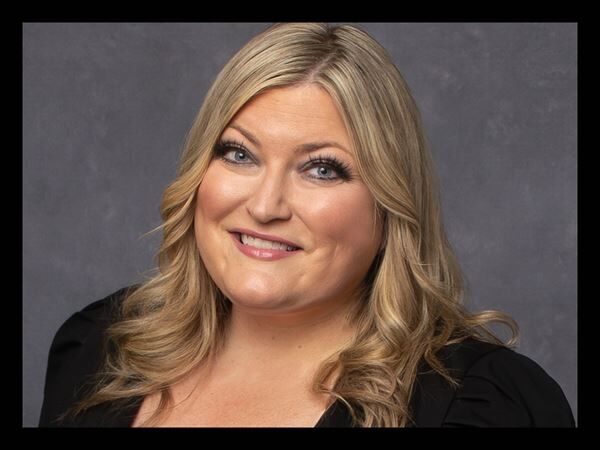NCAA rule change leads to Canadian Hockey League players making mass exodus to U.S. colleges
News > Sports News

Audio By Carbonatix
10:22 PM on Sunday, September 28
By JOHN WAWROW
Cale Makar has difficulty recognizing the college hockey landscape in the wake of a seismic shift that has transformed the sport in the mere five years since he left UMass to join Colorado in the NHL.
From the introduction of name, image and likeness money to the NCAA lifting its ban on Canadian Hockey League players in November, Makar was captivated by the sheer number of players committing to Division I programs this offseason. It seemed like a mass exodus culminating with Gavin McKenna — the NHL’s prospective 2026 No. 1 draft pick — committing to Penn State.
“It’s a crazy world. I’m glad I’m kind of out of that now,” Makar said. “It seems like a gong show.”
The path south is familiar for Canadian players like Makar. The two-time Norris Trophy winner as the league's top defenseman left his Calgary hometown to spend two years playing for the Minutemen and was voted college hockey’s MVP in 2019.
What’s changed are the rules, leading to a transformational shift altering the dynamic between the CHL and NCAA in ways not yet entirely realized.
“I wish I had the answer to that,” Washington Capitals assistant GM Ross Mahoney said. “I guess it’ll probably shake itself out in the next three or four years.”
What is clear is that players no longer have to choose before turning 16 whether to go to the CHL or maintain college eligibility in the United States Hockey League or go the Canadian Junior A route. They're now free to play in the CHL before deciding whether to commit to a U.S. college after high school.
The influx of CHL talent should elevate college hockey to an even higher standard.
“We’re witnessing a paradigm shift the size of which college hockey’s never seen,” said Frank Serratore, who's entering his 29th season as coach at Air Force. “Like it’s massive. I tell you what, DI hockey players have always been members of an exclusive club. And that club is about to become even more exclusive.”
Serratore projects CHL players adding depth and displacing players who were previously pegged as third- or fourth-liners.
“Many rosters are going to be unrecognizable from a year ago,” he said. “I've spoken to a lot of coaches who feel their fourth lines this year are going to be as good or better than their second lines.”
The floodgates have opened, with College Hockey Insider reporting nearly 325 CHL players committing to U.S. colleges for this season and beyond.
In turn, the 61 teams making up the CHL umbrella — the Ontario, Western and Quebec Maritime leagues — suddenly have a new talent pool of USHL and Junior A prospects to draw from to fill their rosters.
The changing landscape has opened a debate over whether the NCAA will eventually overtake the CHL as the primary feeder of talent to the NHL. Hockey East Conference Commissioner Steve Metcalf believes college hockey now has the edge.
“Currently the NHL is made up of about one-third of players that come directly from college. That number is going to grow to two-thirds in no time at all,” Metcalf said. “And I haven’t been able to find anyone that doesn’t think that’s the track we’re on.”
The numbers were already shifting before the NCAA rule change announced last fall.
Two of the past five No. 1 draft picks, San Jose’s Macklin Celebrini and Buffalo’s Owen Power, are Canadians who chose the USHL before being drafted out of college. Before that, Rick DiPietro in 2000 and Joe Murphy in 1986, were the only two other college hockey players to go No. 1.
Ontario Hockey League Commissioner Bryan Crawford questioned how many 18-year-olds can hold up in the college ranks against players 20 and older.
“There’s generational talents. Gavin McKenna is going to be successful no matter where he goes,” Crawford said.
“Now the next question is really that next grouping of guys, and how does that work out for them?” he added. “I think you need to see some test cases, so to speak, over the coming seasons to see if (college) is the best way to go.”
Crawford also disputed Metcalf’s two-thirds projection, suggesting it might be a matter of semantics with the CHL and NCAA ultimately sharing the credit.
“I think that there’s actually a harmonious relationship that will inevitably develop between all the stakeholders,” he said.
Ideally, prospects have the opportunity to enjoy the best of both worlds. They can spend their first two or three years competing against their peers in the CHL or USHL, before determining whether to further their development in college.
The NHL benefits, too. New Jersey Devils general manager Tom Fitzgerald said his scouts now have more time to evaluate prospects before deciding on whether to sign them.
Fitzgerald used forward Cole Brown as an example. Selected in the sixth round of the 2023 draft, the 20-year-old has committed to play at Notre Dame after spending the past four years in the OHL.
“I can tell you, we wouldn’t have signed him. He’d be a statistic,” Fitzgerald said. “So now, he may have a chance in two years.”
The same might one day apply to Marcus Kearsey. The 19-year-old undrafted defenseman chose to spend a fourth season with QMJHL Charlottetown, while committing to play at Northeastern next year.
“As a captain, I didn’t really feel like I wanted to leave (Charlottetown) after a disappointing year,” Kearsey said.
“I’ve built so many relationships and I’m pretty comfortable there. But you’ve got to move on eventually,” he added. “So to have (Northeastern) to go to and know where I’m going to end up next year, it’s really reassuring.”
___
AP Hockey Writer Stephen Whyno contributed.
___
AP NHL: https://apnews.com/hub/nhl










